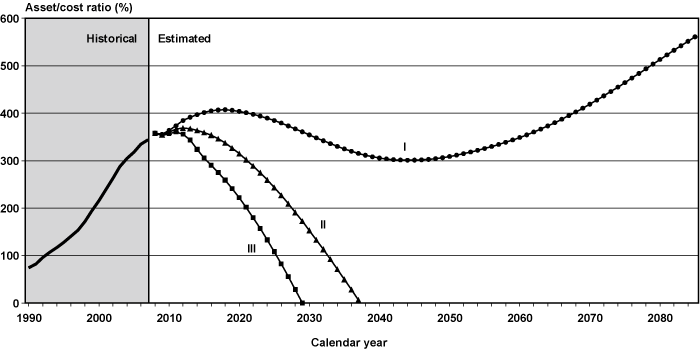As a result of changes to Social Security in 1983, benefits are now expected to be payable in full on a timely basis until 2037, when the trust fund reserves are projected to become empty. At the point where the reserves are used up, continuing taxes are expected to be enough to pay 76 percent of scheduled benefits. So, Congress will need to make changes to the scheduled benefits and revenue for programs in the future. The Social Security Board of Trustees project that changes is equal to an immediate reduction in benefits of about 13 percent, or an immediate increase in the combined payroll tax rate from 12.4 percent to 14.4 percent, would be enough to allow full payment of the benefits for the next 75 years.
There is no one clear solution to the problem of bigger cost for retirees because of fewer workers available to support the retirees, which in turn is caused by lower birth rates. This problem is not specific to Social Security but also affects Medicare as well as many other private and public retirement income. The lowering in birth rates has been far more dramatic in Japan and many European countries that are struggling with the effects of aging populations because of declines in birth rates even more severe than in the United States.A variety of possible changes to the provisions of the Social Security Act have been considered by policymakers and have been scored.
This has to deal with what we are learning in government right now because we just learned about Social Security and Medicare, and the big cost for both.
